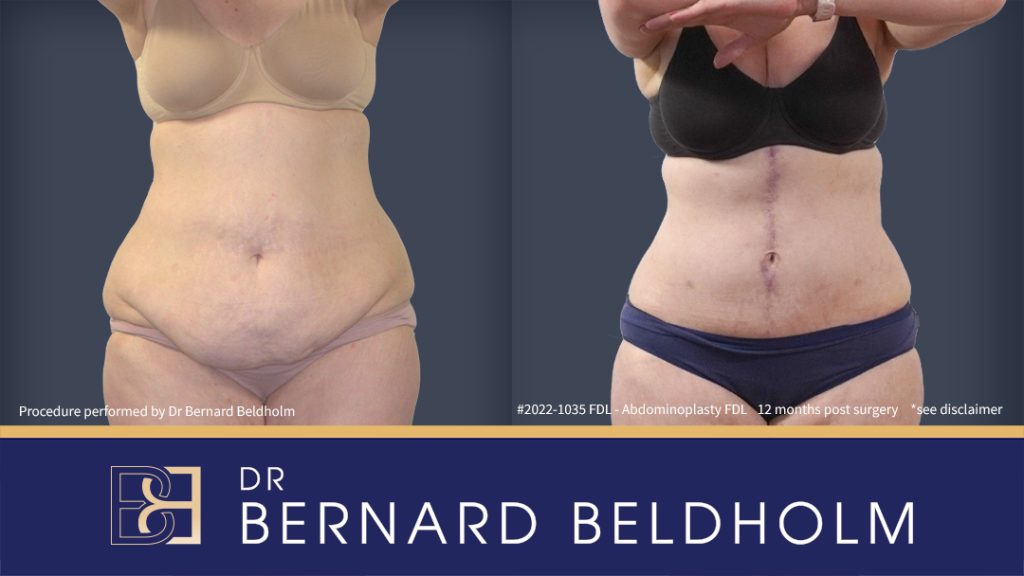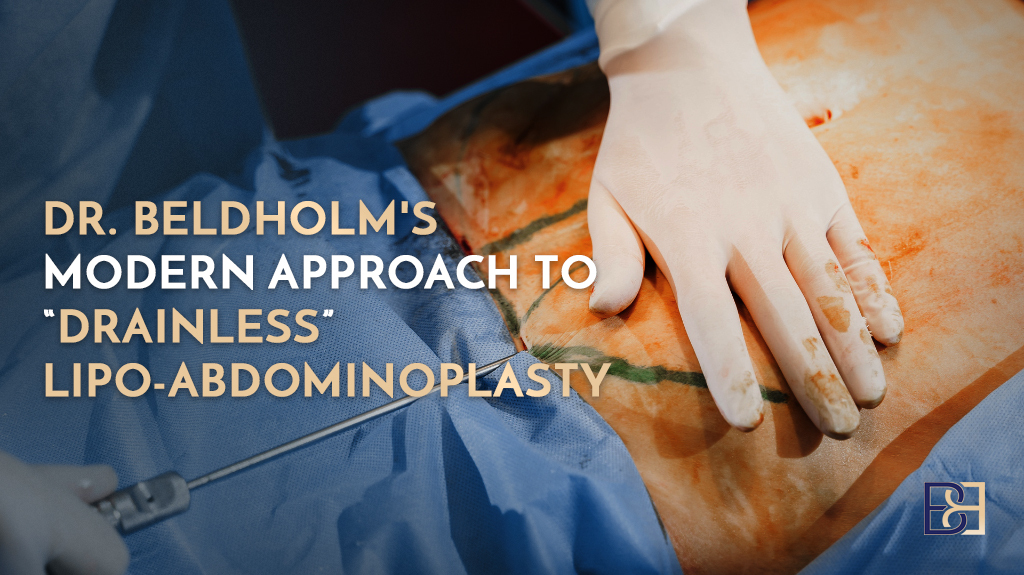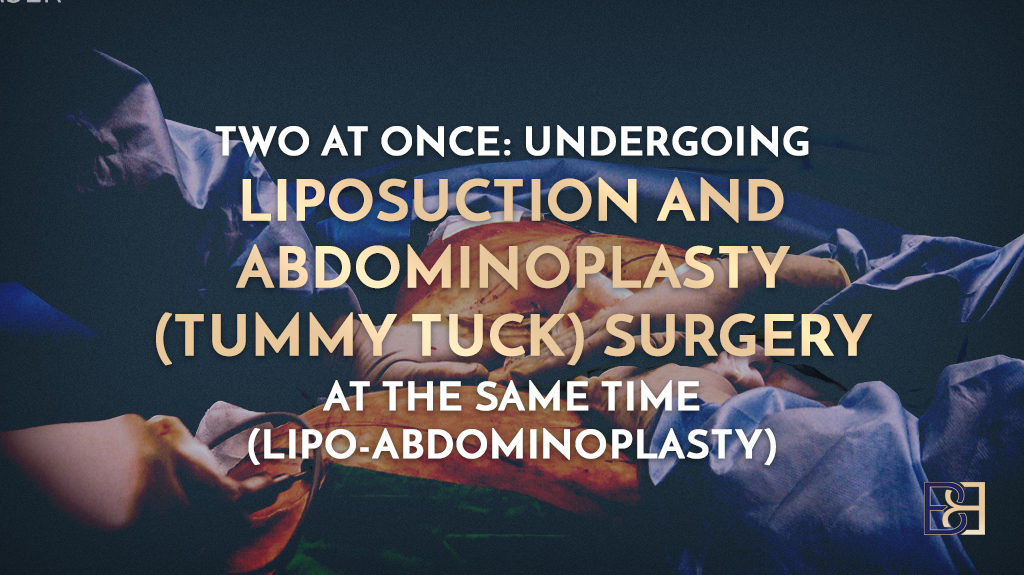Like any other major surgery, a tummy tuck (abdominoplasty) procedure leaves a scar. These scars vary depending on the complexity of your surgery and the incision length your tummy tuck procedure requires. It is possible to ** certain scars by positioning them below the bikini line. In my 15 years of experience, I have acquired expert skills in performing tummy tuck surgery that leaves the least visible scars possible. Rest assured that I will do my best to ensure your scar minimisation.
Book your appointment online now
I understand if you’re worried that your tummy tuck (abdominoplasty) procedure will leave an ugly scar on your abdomen. Most tummy tuck patients who visit my clinic are highly concerned about the visibility of their incision scar after their body contouring procedure. Today, I’d like to share the effective steps I take to ** this issue and optimise abdominoplasty results.
But first, let’s go over a few abdominoplasty scarring basics.

Understanding Abdominoplasty Scars
Scar formation is natural following any surgical procedure, whether major or minor. A tummy tuck (abdominoplasty) is a major surgery, as it involves removing excess skin, fat, and tissue from your abdominal region. This body contour surgery will leave a scar on the incision line after the wound heals.
I advise my patients to follow post operative instructions and focus on allowing the incision to heal properly. A properly healed incision leads to the formation of a better-looking abdominal scar.
Stages of Scars After Tummy Tuck Surgery
Your tummy tuck scar heals in different stages, becoming less noticeable as the incision wound heals. Once the incision heals, you will notice a significant difference from how it looked immediately after surgery. Here is a brief description of what these stages look like:
Stage One: First Few Weeks After Surgery
Immediately after your procedure, your incision wound will look pink and thin. This is because the body produces collagen to close the incision made during surgery.
Stage Two: One Month After Surgery

Disclaimer: Operation performed by Dr Bernard Beldholm. Adult content, surgery has risks; individual results vary, seek 2nd opinion. Please see the full disclaimer.
Most of the pain and discomfort will have disappeared, and you’ll notice your scar is more raised, darker, and thicker. Some patients worry that the wound looks worse at this stage, but that is actually a sign that the wound is healing properly.
This is because your body supplies the delicate wounded region with collagen and sufficient blood to promote wound healing.
Stage Three: Six Months After Surgery

Disclaimer: Operation performed by Dr Bernard Beldholm. Adult content, surgery has risks; individual results vary, seek 2nd opinion. Please see the full disclaimer.
At this stage, your scar will have healed further, losing the thick and dark appearance and becoming flatter and paler.
Stage Four: One Year After Surgery

Disclaimer: Operation performed by Dr Bernard Beldholm. Adult content, surgery has risks; individual results vary, seek 2nd opinion. Please see the full disclaimer.
Most tummy tuck scars heal fully after 12 months. If your body’s healing process was smooth and you experienced no complications, you’ll notice your scar is flat, thin, light, and less noticeable.
However, I must mention that healing varies from patient to patient. The most important thing is to allow the scar to heal effectively, no matter how long it takes. Also, your tummy tuck (abdominoplasty) scar will not completely fade. However, during our consultative session, I will share tips on how to make your tummy tuck scar less noticeable.
Factors Related to Scar Formation
Several body, environmental, and lifestyle factors affect scar formation. These attributes vary, which is why wound healing and scar formation could be totally different for two people who have undergone the same procedure. Some of these factors that will affect how a tummy tuck scar looks include;
Age
Health
Predisposition to scar formation
Lifestyle factors like smoking and sun exposure

Types of Scars
Here are the different types of surgical scars:
Raised Scars

A raised scar protrudes above the skin; you can feel it when you touch the affected areas. Its raised nature results from your body producing more collagen to heal a deeper wound, especially in the dermis layer. Raised scars occur in different degrees and types and are ** and visible.
Hypertrophic Scars
Hypertrophic scars, which are thick,

raised, and more visible, commonly occur in areas where the skin has been traumatised, such as after a plastic surgery or serious burn. An NLB (National Library of Medicine) study shows that “[h]ypertrophic scarring represents an undesirable variant in the wound healing process. In hypertrophic scars, excess connective tissue is deposited in the area of the original tissue wound. This activity reviews the evaluation and management of hypertrophic scarring and highlights the role of the interprofessional team in the recognition and management of this condition.”
Keloid Scars

Keloid scars are advanced hypertrophic scars by a raised, shiny, smooth, and hairless protrusion on the skin that is commonly a different skin tone than yours.
These scars are more extensive, extending beyond the affected area. Keloid scars mainly occur on the cheeks, shoulders, earlobes, and chest. Keloid scarring can form years after a skin injury and take time to grow, during which time they can be itchy and/or painful.
Widened Scars

A widened scar looks flat, thin, and more comprehensive. It forms as a result of the tension created on the wound ends. You’ll find them in body areas that undergo constant motion, such as the knee, back, and shoulders. The good news is that these scars, because of their flat nature, can be camouflaged with makeup.
Hypo and Hyperpigmented Scars

The difference between Hypo and Hyperpigmented Scars
is mainly their colour. Hypopigmented scars appear lighter compared to the surrounding skin. This colour results from the body releasing melatonin, which makes them whitish and pale.
Hyperpigmented scars tend to be darker than the surrounding area. Their dark pigmentation is due to the body releasing melanin into the affected area.
Tethered scars
Your skin features a fat layer between the muscle layer and dermis. Tethered scars form when a scar gets attached to the muscle layer. In cases where the fat layer is missing, such as after a too much Liposuction, the scar attaches itself to the muscle layer, resulting in a more visible scar. This is one reason for always leaving a thin layer of fat in the subcutaneous layer when performing liposuction.
Tethered scars are common during normal healing. However, they might be an indication that your body isn’t repairing the fat layer properly.

Scar Placement
Strategic scar placement is crucial, especially after an abdominoplasty, as it determines your final appearance. There are two types, high and low scar placements. A high scar placement is noticeable from afar. I recommend the following;
Underwear line
As your specialist surgeon, I will make an incision along your underwear line if the procedure allows. This makes it easier to ** the scar when you wear a bikini.
Avoid a scar that is too high
I will try as much as possible to avoid placing the incision higher on your abdomen. The higher the incision, the higher the scar, and the more noticeable it will be.
Advantages of Low-Placed Scars
The advantage of a low-placed scars is that they can be easily ** by your underwear, a bikini swimsuit, or low-rise jeans.
During our consultative session, we’ll discuss the various scar placement options depending on the ideal abdominoplasty procedure. I’ll also share some sample photos to help you make an informed decision.

Differences in Scars by Type of Tummy Tuck
It’s time to shift our focus to the different types of scars that can form after your tummy tuck. The formation of certain scars varies with the procedure, your goals, and the extent of skin and fat removal involved. A PubMed study shows that “[t]he degree of scarring is determined by the extent of the initial wound and the time interval between the injury and complete healing. Several factors contribute to the formation of scars, including infections, retention of foreign bodies and prolonged healing beyond 2–3 weeks.”
The rule of thumb regarding abdominoplasty scarring is that the more extensive the procedure, the longer and larger the scar. Here are the standard abdominoplasty procedures and their respective scars:
Mini Abdominoplasty

I recommend a mini tummy tuck to ** minimal excess skin and fat. The procedure requires a small incision, similar to the one made during a C-section, which I’ll place on your bikini line. This leads to a small and lowly-placed scar that can be easily ** .
Full Tummy Tuck
A full tummy tuck ** more excess skin

and fat than a mini abdominoplasty surgery. To remove more skin and fat, I will make a longer incision, running from hip to hip. I’ll carefully place the standard tummy tuck incision around your bikini to make it easier to ** the scar. The result is a lowly placed incision scar that is somewhat longer than a mini tummy tuck scar.
Extended Tummy Tuck

Extended abdominoplasty surgery is more extensive and ** skin laxity in the abdominal area and around the hips. I will make a longer incision, compared to the one required for full abdominoplasty, which will run beyond the hip bone to the flanks. The long incision made results in a more extensive scar.
FDL

Disclaimer: Operation performed by Dr Bernard Beldholm. Adult content, surgery has risks; individual results vary, seek 2nd opinion. Please see the full disclaimer.
Fleur-de-Lis (FDL) is your ideal option if you’ve undergone significant weight loss that caused serious abdominal skin laxity. For this procedure, which is the most extensive option on this list, I will make horizontal and vertical incisions to ** the skin laxity on your lower and upper abdomen. The vertical incision goes up to the stomach area, and the horizontal incision runs hip to hip.
The surgery results in a more noticeable inverted T, horizontal and vertical scar. However, before the procedure, we will discuss various effective ways of reducing visible scars.

Download our infographic: “15 Exercises to Try After Abdominoplasty”
Aftercare
After your procedure, I will provide personalised post-surgery guidelines on how to take care of your delicate abdominal region. These guidelines include proper scar aftercare instructions to ensure your incision wound heals completely.
During surgery, I will also incorporate various strategies to help reduce scar visibility. Some of these measures include;
Absorbable Sutures
I use absorbable sutures for almost all body contouring surgeries. They are efficient in re-approximating your skin layers. Apart from being functional, the stitches gradually reabsorb several months after your procedure.
Stitching the Wound
I understand the significance of a precise stitching job. The goal is to achieve a smooth, flat, and seamless closure to ensure proper wound healing. Uneven stitches can lead to complications, such as hypertrophic scars due to excessive scar tissue. To avoid this, I use a combination of stitches, including a permanent stitch deeper in the abdominal wall, to minimise tension on the superficial wound. This approach, along with additional layers of stitching, results in a better scar and optimal healing.
PICO Wound Dressings

Proper wound healing significantly increases the chances of developing a better-looking scar. For optimal results, I’ll use PICO Negative Pressure dressings for your procedure. PICO dressings, which outshine traditional wound dressings in almost all aspects, feature a vacuum pump that creates negative pressure around the incision area which increases blood flow and promotes healing. We’ll talk more about PICO Negative Pressure wound dressings during our consultative session.

Tips and Treatments
Even though tummy tuck scars are unavoidable, specific ways exist to manage them and reduce their visibility. For instance, I strongly advise you to quit smoking at least six weeks before and after your procedure. Smoking hinders wound healing and increases the chances of developing complications. Another National Library of Medicine study shows that “[c]igarette smoking negatively impacts wound healing on multiple levels. As a result, chronic wound patients who continue to smoke should be encouraged to quit and provided tools by healthcare providers to assist with that process. Existing evidence suggests that smokers are more successful with abstinence when presented with repeated personalised messages urging them to quit along with assistance in their attempts to quit smoking.”
Other helpful scar treatment tips include;
Keep it Clean
Keep your wound and surgical dressings clean to prevent contamination and infection that may hinder healing.
Avoid Sun Exposure
I advise against exposing the delicate incision wound directly to sunlight before it heals completely. The sun’s heat can increase the swelling, prolong the healing, and increase the risk of scarring.
LED Light Treatment

LED light therapy accelerates wound healing by promoting wound closure. It can also be a good alternative for non-healing wounds; however, I’ll advise you more after surgery. Another major benefit of healite ii LED light therapy is it reduces patient downtime, allowing you to resume normal activities **.
Other benefits of LED light therapy:
Helps guard against infection
Increases **during the healing process
Accelerates tissue repair
Reduces pain experienced during healing
Decreased wound size and scar
Silicone Strips
Silicone strips also come in handy. They prevent the formation of discoloured scars and reduce swelling. Other benefits of using these strips include reduced pain, discomfort, and itching.
Laser Genesis
Laser Genesis reduces the size of blood vessels around the wound, reducing the scar redness that makes an abdominoplasty scar more visible. This treatment option promotes the fading of the incision scar to match your skin tone.

FAQs
Below are some commonly asked questions about scar formation after abdominoplasty surgery.
How long will my tummy tuck scar take to heal?
The average tummy tuck scar normally takes six to twelve months to heal completely. You should begin resuming normal activities 12 weeks post-op. However, this depends on various factors, such as the complexity and type of the procedure. Remember that healing times vary, and this duration could be more or less.
Should I consider scar massage?
Yes. However, you need to consult a specialist surgeon first. If your scar tissue is healing correctly, you may consider this massage after three weeks.
How can I prevent a tummy tuck scar?
You cannot prevent an abdominoplasty scar. The best approach is to take care of your incision wound and ensure it heals correctly. Proper wound healing leads to the formation of better-looking scars.
When should I consider scar surgery treatment?
It’s important to allow twelve to eighteen months for your procedure to heal before considering scar treatment. I recommend we carefully examine your wound healing progress to determine if the treatment is necessary.

Dr. Beldholm’s Final Take: Beautiful Tummy Tuck Scars
Tummy tuck scars are inevitable, and I believe you have sufficient detail on how tummy tuck scar look like; however, with proper placement, we can reduce their visibility and make them easier to **. I have been practicing body contouring surgery for over 15 years and have the knowledge, expertise, and experience to deal with surgical scars. I encourage you to book a consultation with me to continue this discussion and determine your ideal tummy tuck scar placement.
Book your appointment online now
References
Khansa I, Harrison B, Janis JE. Evidence-Based Scar Management: How to Improve Results with Technique and Technology. Plast Reconstr Surg. 2016 Sep;138(3 Suppl):165S-178S.
Lee Peng G, Kerolus JL. Management of Surgical Scars. Facial Plast Surg Clin North Am. 2019 Nov;27(4):513-517.
Byrne M, Aly A. The Surgical Suture. Aesthet Surg J. 2019 Mar 14;39(Suppl_2):S67-S72
de Oliveira GV, Gold MH. Silicone sheets and new gels to treat hypertrophic scars and keloids: A short review. Dermatol Ther. 2020 Jul;33(4):e13705.
Rose J, Tuma F. Sutures And Needles. 2023 Aug 28.
Spotnitz WD, Falstrom JK, Rodeheaver GT. The role of sutures and fibrin sealant in wound healing. Surg Clin North Am. 1997 Jun;77(3):651-69.
Kim S, Kang SI. The effectiveness of negative-pressure wound therapy for wound healing after stoma reversal: a randomised control study (SR-PICO study). Trials. 2020 Jan 6;21(1):24.
Lin YS, Ting PS, Hsu KC. Comparison of Silicone Sheets and Paper Tape for the Management of Postoperative Scars: A Randomised Comparative Study. Adv Skin Wound Care. 2020 Jun;33(6):1-6.
Regan JP, Casaubon JT. Abdominoplasty. 2023 Jul 24.
Hsu KC, Luan CW, Tsai YW. Review of Silicone Gel Sheeting and Silicone Gel for the Prevention of Hypertrophic Scars and Keloids. Wounds. 2017 May;29(5):154-158.





